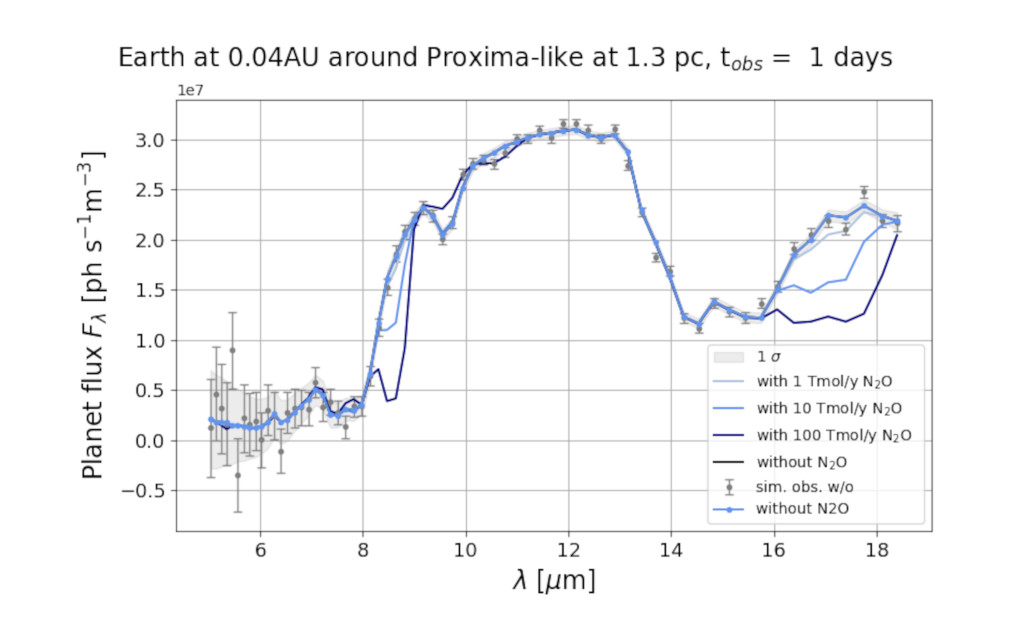LIFE XII paper accepted in AJ: Sniffing Capstone Biosignatures in the MIR
This study aims to identify exemplary science cases for observing N2O, CH3Cl, and CH3Br in exoplanet atmospheres at abundances consistent with biogenic production using a space-based mid-infrared nulling interferometric observatory, such as the LIFE (Large Interferometer For Exoplanets) mission concept.
We hope that there is a little bit for everyone in this:
- a detailed review how these biospheres could form and why these are particularly well suited biosignature gases (spoiler: no equilibrium sources)
- an analysis how many rocky
- terrestrial targets we would have available and how far away (spoiler: dozens, usually around 5pc for M and 8 pc for FGK)
- simulated observations for many combinations of host stars and observation time (spoiler: detectable for most cases examined in less than ~50 days)
- a sanity check comparing direct spectral SNR with full retrievals (spoiler: it seems to be consistent)
- a comparison of different LIFE setups to constrain science requirements (spoiler: bigger is better)
external pageLIFE Webpage for more Information

Detectability of various fluxes of N2O in the emission spectrum of an Earth-like planet around Proxima Centauri at its original distance, after only 1 day of observation with LIFE. Planet flux for atmospheres with and without N2O . The grey area represents the 1-σ sensitivity; the dark grey error bars show an individual simulated observation.
